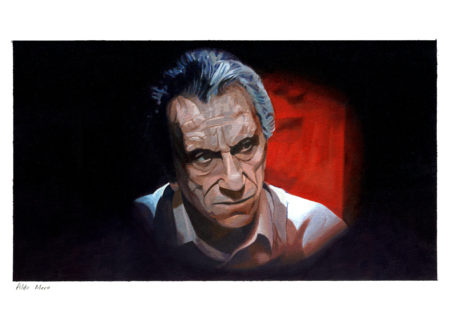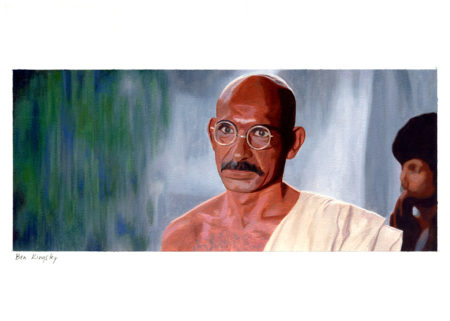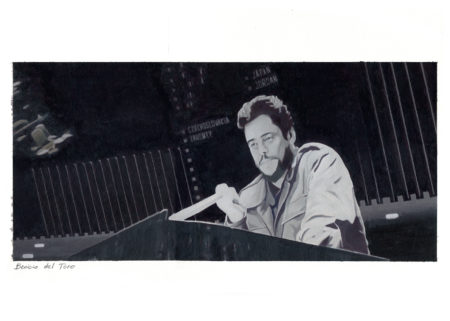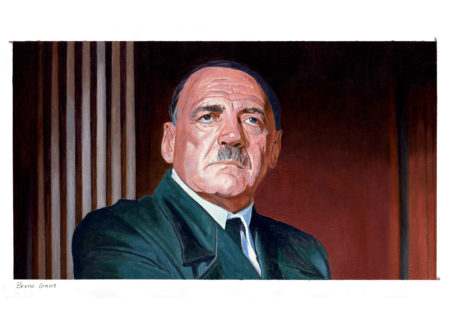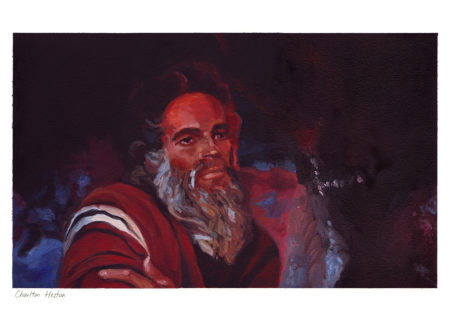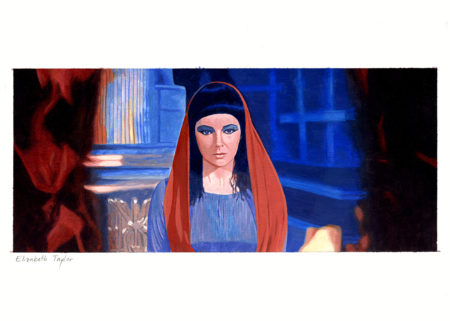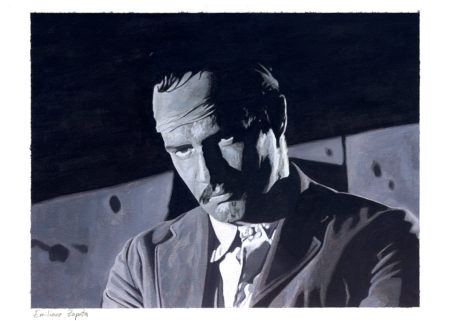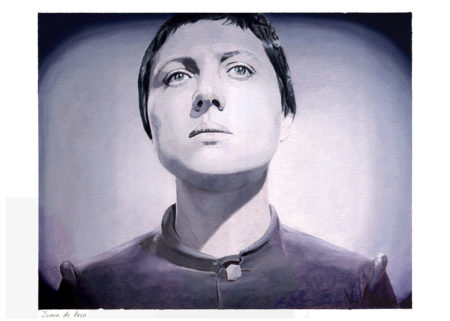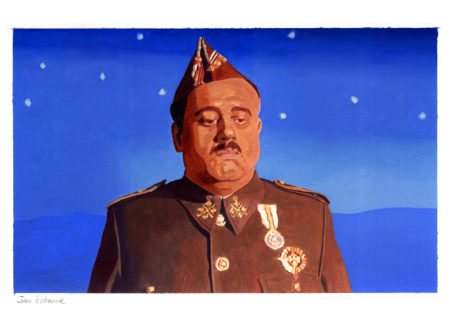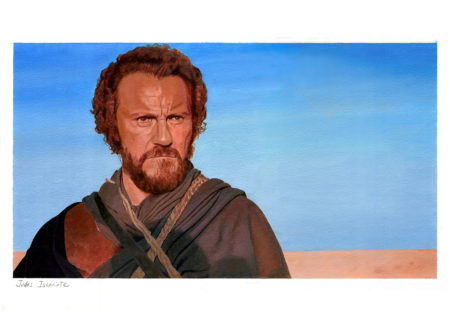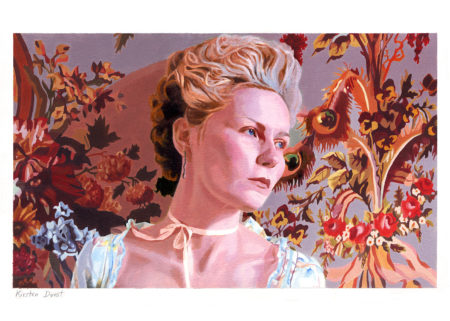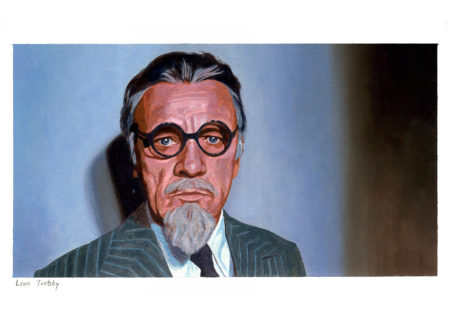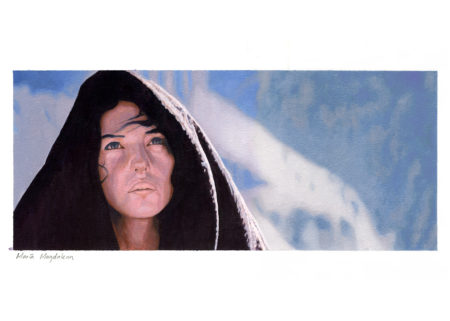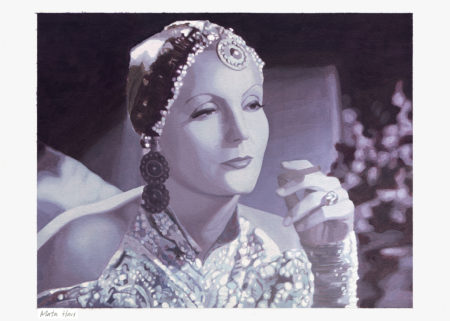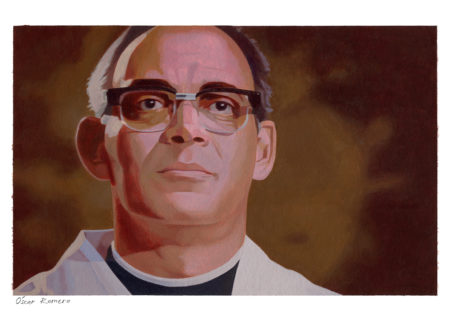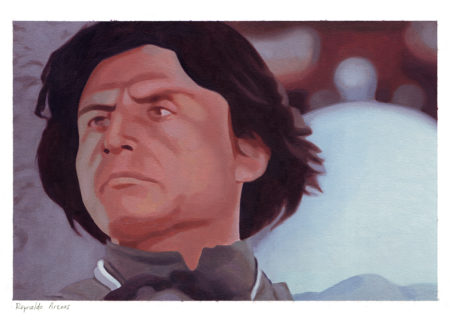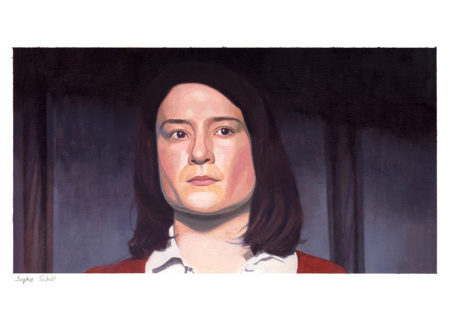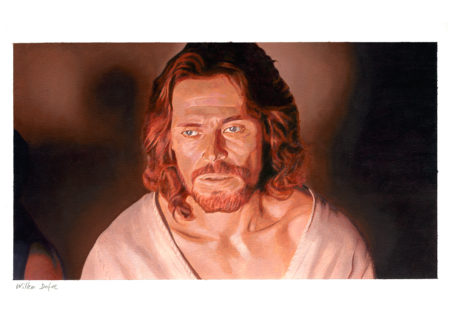Miguel Aguirre
Biopic
Both formally and conceptually, contemporary painting can come close to cinema. It can, moreover, create interpretations of cinema without unnecessary complexities – using knowledge about the different genres that have traditionally constituted it as a critical tool. In the case that interests us, portraiture is the most adequate interpretation.
I start with the certainty – also attained in the Dramatization series- that cinema has been and still can be a relevant learning media to approach History and some of its specific characters. The contribution that films have given to our historic imaginary cannot be denied.
I am fascinated by the way in which certain actors have become ineluctably associated with specific historical characters they have played. For instance, the images of Elizabeth Taylor or Renée Marie Falconetti are strongly associated to Cleopatra and Joan of Arc, respectively. Not only is it that they become convincing they bear some resemblance to the original, but also because of details in their performance affecting the personality of the character and converting them into complex and unique beings.
Credibility is authenticity. In Walter Benjamin’s paradigmatic text The Work of Art in the Age of Its Technical Reproducibility, he writes with respect to the loss of the “aura”andmakes an acute analysis of cinema using Baudrillard´s concept of simulacra: likewise, the product of “historical cinema” has as a result the suppression of the original in favour of the installation of a new historical reality, the simulacrum.
Our historical references find their face, voice and attitude in the cinematographic industry – as a matter of fact in many schools teachers use historical films as a support for teaching and only very rarely are archive images used. Let’s not forget that one thing that this genre of cinema does is to reduce the role of History, in favour of story-telling.
This is why I talk about our historical imaginary. Characters who lived twenty centuries or seventy years ago as Christ or Gandhi now bear the faces of Willem Dafoe or Ben Kingsley, to cite further examples from Biopic. This ambiguity explains the alternation when naming each portrait: I can use either the name of the historical character or that of the actor or actress who are its incarnation.
In this way, the face of the actor overlaps with the original features of Gandhi and vice versa. I can see a photograph or cinematographic document of Gandhi and I remember Ben Kingsley. Or I can see a photograph of Kingsley advertising his next film and immediately I remember his performance of Gandhi.

